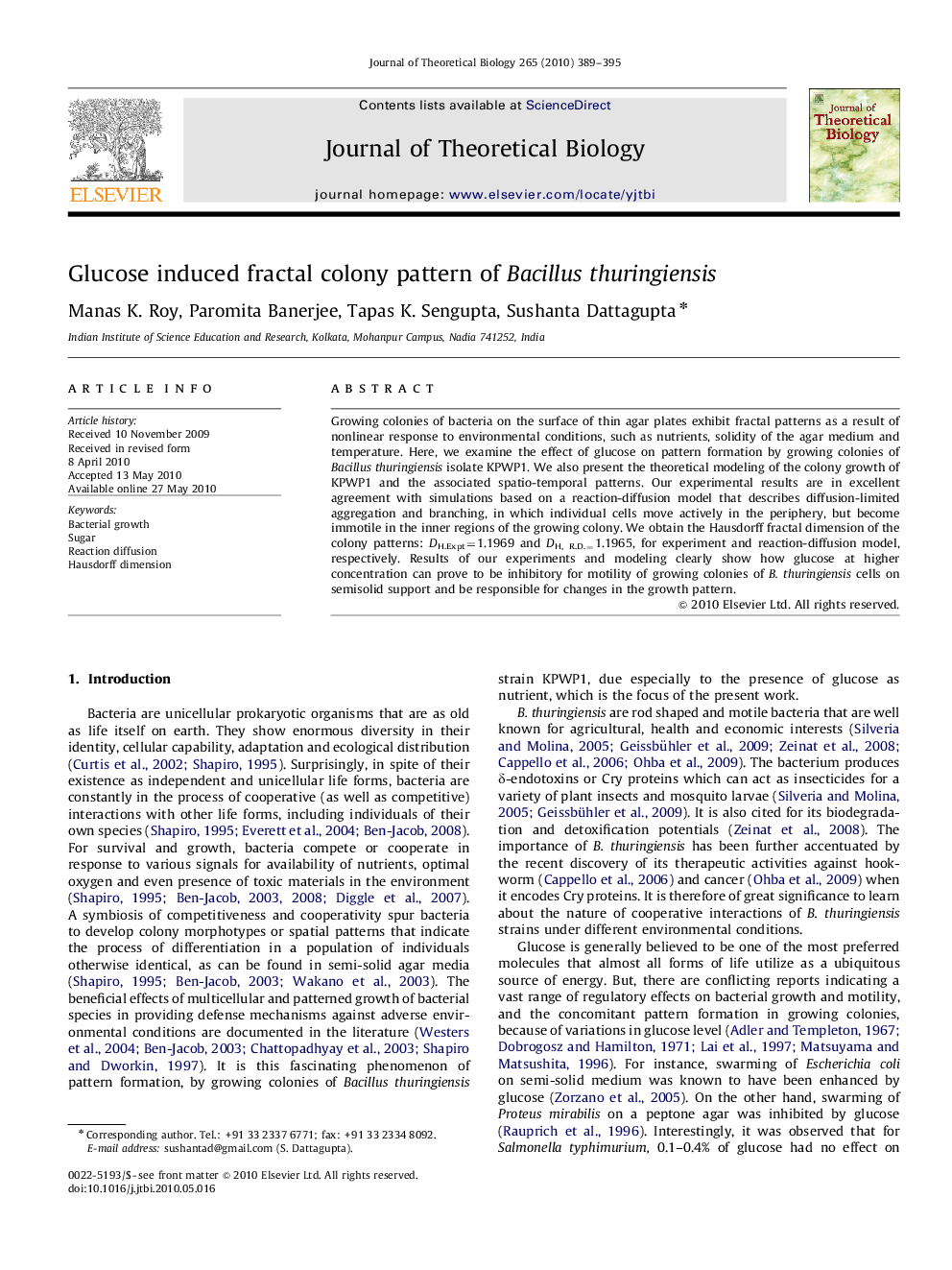| Article ID | Journal | Published Year | Pages | File Type |
|---|---|---|---|---|
| 6371589 | Journal of Theoretical Biology | 2010 | 7 Pages |
Abstract
Growing colonies of bacteria on the surface of thin agar plates exhibit fractal patterns as a result of nonlinear response to environmental conditions, such as nutrients, solidity of the agar medium and temperature. Here, we examine the effect of glucose on pattern formation by growing colonies of Bacillus thuringiensis isolate KPWP1. We also present the theoretical modeling of the colony growth of KPWP1 and the associated spatio-temporal patterns. Our experimental results are in excellent agreement with simulations based on a reaction-diffusion model that describes diffusion-limited aggregation and branching, in which individual cells move actively in the periphery, but become immotile in the inner regions of the growing colony. We obtain the Hausdorff fractal dimension of the colony patterns: DH.Expt=1.1969 and DH, R.D.=1.1965, for experiment and reaction-diffusion model, respectively. Results of our experiments and modeling clearly show how glucose at higher concentration can prove to be inhibitory for motility of growing colonies of B. thuringiensis cells on semisolid support and be responsible for changes in the growth pattern.
Related Topics
Life Sciences
Agricultural and Biological Sciences
Agricultural and Biological Sciences (General)
Authors
Manas K. Roy, Paromita Banerjee, Tapas K. Sengupta, Sushanta Dattagupta,
